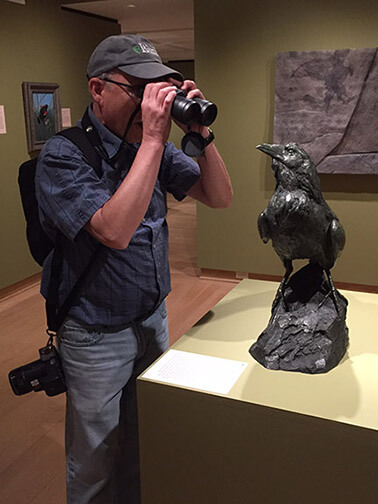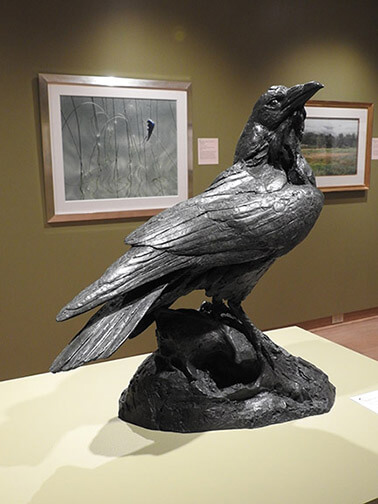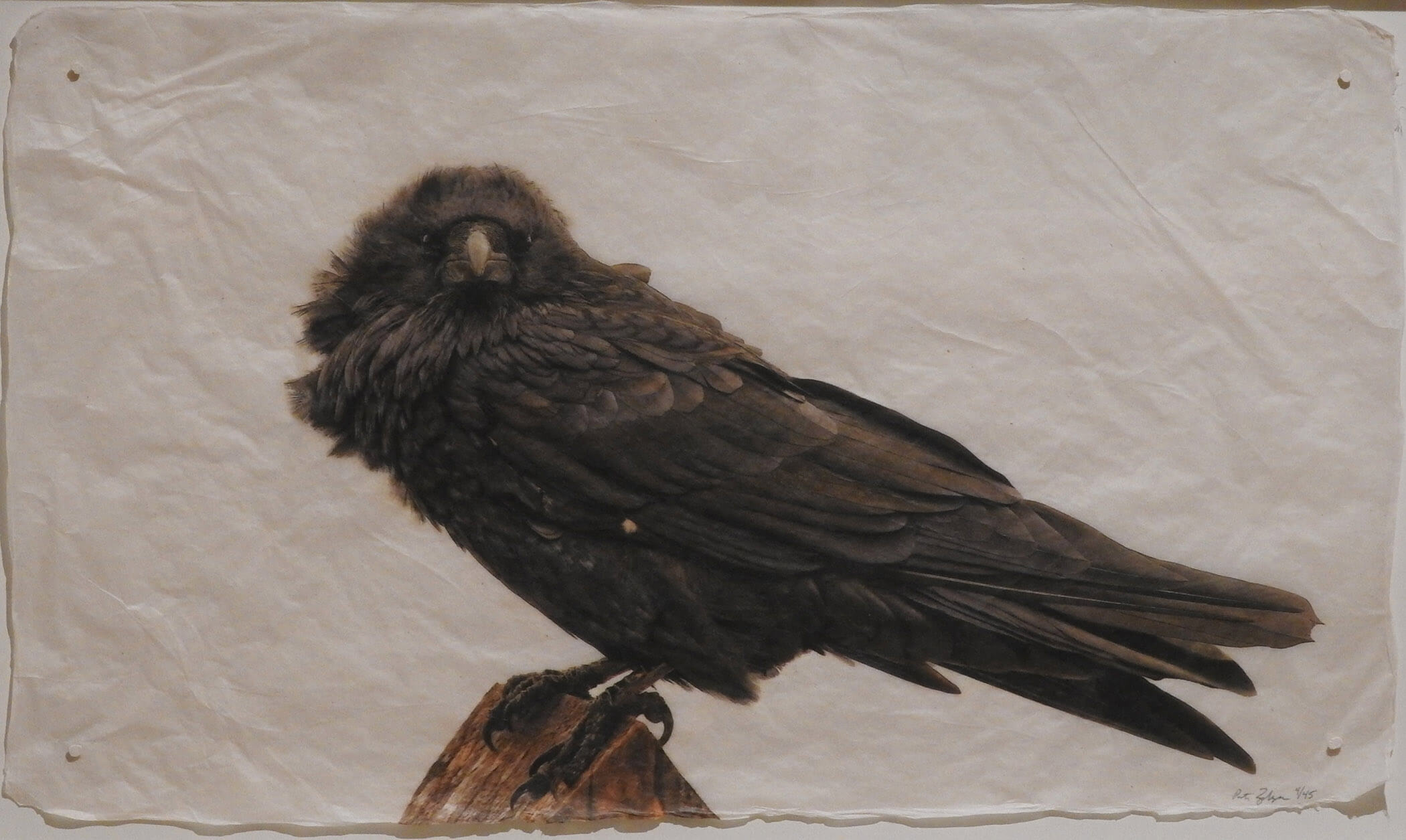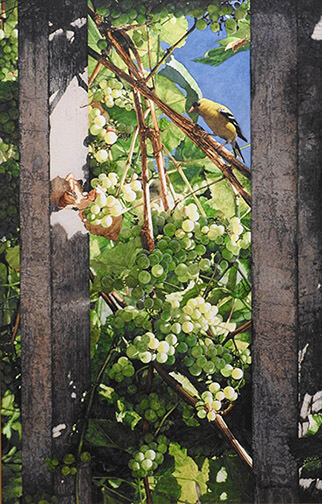Being the Woodson Art Museum’s resident expert – and I use that term loosely – on all things birds, I recently took on an Art 101 program designed as an indoor birding expedition among paintings, sculptures, prints, and drawings in the south galleries. These five galleries include several dozen artworks from the Museum’s collection comprising Passionate Pursuits: Birds in Our Landscapes, an exhibition organized by curator Jane Weinke.

To set the mood and add levity to my program, I wore some of my birding equipment and clothing. As you see in the photo above, I’m serious about indoor birding; here I’ve spotted a bronze common raven by sculptor Walter Matia. Walt’s raven was one of the first stops on my gallery walk. I enjoyed examining the sculpture’s powerful design and comparing it to a photograph of a raven by Chicago artist Pete Zaluzec that doesn’t look like a photograph.

Quizzing those joining me, I asked how we might identify a raven and not mistake it for a large crow. One participant answered that ravens are larger, have larger bills, and often are solitary. Sound is another good way to distinguish ravens from crows. The raven’s call is a deep croak, while the crow makes a higher-pitched “caw” sound. I played the sound of each bird for comparison and also noted the raven’s feathers above its bill and around the throat are more pronounced and textured compared to a crow’s. A good way to identify a raven in flight is to view its v-shaped tail feathers; crows have squared-off tail feathers.

When selecting artwork for Passionate Pursuits, Jane focused on birds found in the Midwest. I’m familiar with all twenty-nine species and even have seen sixteen of them at my backyard feeders. A common bird in this area is the American goldfinch. The male goldfinch is easily identified in the spring and summer with its brilliant yellow feathers, black wings with white bars, and a black head cap. They are easy to identify by in-flight song and often undulating flight pattern.

A painting that I’ve always enjoyed since the Museum acquired it in 2003 is Sueellen Ross’ Vineyard Visitor. Sueellen created this mixed-media artwork after visiting a vineyard in western Oregon and was enchanted by a bountiful crop of sumptuous green grapes. In her discussion about this work on the Museum’s audio-tour app, Ross describes her painting process and why she decided to add the American goldfinch.
For additional insights into nine Passionate Pursuits artworks, consider the audio tour, accessed by listening on a Museum iPod when visiting or by downloading the Woodson Art Museum app on your smartphone or tablet; all free and an excellent way to enhance your indoor-birding expedition.




